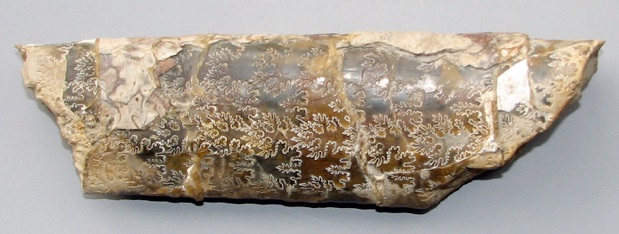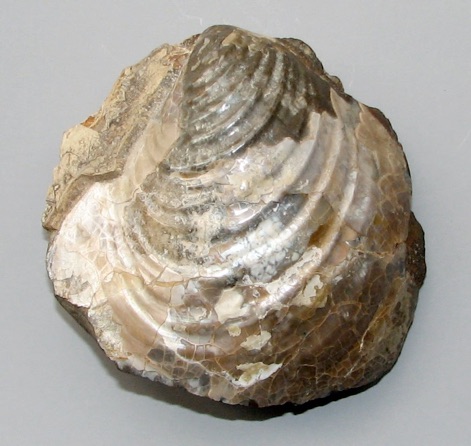Index fossils

Some species existed for such a short time that their fossils are only found in rocks of specific ages. These fossils are useful as index fossils, meaning that if they are found in association with other fossils, we can use the index fossils to date the rock layer and all the associated fossils. Below are two index fossils from the Cretaceous. The top fossil is Baculites, a cephalopod (relative of squids) with a highly convoluted septa pattern of their shell. These are descendants of the cephalopods we found millions of years earlier in the Cincinnati fossils. This fossil was collected from Hardin, Montana.
The bottom fossil is of a fossil clam, Inoceramus. This group of extinct clams were very common in the seas during the time of the dinosaurs (Cretaceous). It is found in Minot, North Dakota.

